Wheeler Redux – Australia, Forever Changed
One-sixth of Australia’s total pre-World War I population of 5 million was killed in action or wounded in the Middle East battles at Egypt or Gallipoli, in France or Belgium at Messines, Polygon Wood, Passchendaele. Survivors of these battles were discharged, repatriated to Australia, expected to take up their lives after what is today acknowledged as the most brutal war in living memory. Some managed to resume their pre-war lives, despite old wounds, amputations, painful memories of loss and sacrifice; some prospered, a testament to their strength of character and to the love and support they received from family and friends; perhaps simply a testament to luck. Their pain and sacrifice is commemorated every Armistice Day, 11th November. The red poppies of Flanders. Australia, forever changed…more than one-sixth of the young adult population dead, or wounded in body and spirit.
Annie Wheeler’s index of Queenslanders serving in the A.I.F. 1914-1918 opens for us the lives of the men and women who volunteered to defend an ideal. Wheeler’s index gives us enough information to trace, through archival collections (National Archives of Australia, Queensland Justice Department) the pre- and post-war lives of these soldiers and nurses – their families, their military units, the actions in which they participated, individual acts of bravery or cowardice (those adjudged to be cowards were executed) and, perhaps most distressing, the injuries they suffered. Shell shock. Gassed. Gunshot wounds (GSW – abbreviation litters these files). Shrapnel wounds. Disease. Captured and confined in enemy prison camps but not out of danger: hungry, cold, alone.
For those killed on the battlefield, a file insert leaps out at the reader: a half-size caramel-coloured card with precise details of the date and place of the death, the location of the grave, correspondence to and from the next-of-kin. Here are two of them, brothers, born near Rockhampton nine years apart, the sons of Patrick and Ellen Greevy:
Greevy, Thomas Fitzpatrick, Gunner 14thField Artillery Brigade, died 9 March 1917 of wounds received in the battle for Bullecourt, buried in Flers Dressing Station Cemetery, 1/2 mile south of Flers, 2-1/2 miles north-west of Combles, France. [For further information on the battle for Bullecourt, see http://www.ww1westernfront.gov.au/bullecourt/bapaume.php]
Greevy, Robert Herbert, Private 42ndBattalion, died of wounds received in action 6 September 1918 France…
It is likely that Robert knows of his elder brother Thomas’ death the previous year but not how he died, whether instantly or mortally wounded and in pain. Likely too that some of Robert’s mates in the 42nd are wounded or dead. He thinks about the ‘boys’ own’ adventure he anticipated, contrasts it with the bloodbath that confronts him. He thinks about his own mortality, wonders whether he is brave enough, strong enough to fight to the death as his brother Thomas did; self-doubt intrudes. Feelings of fear, anger, helplessness over his own inability to choose where he fights or when, powerless over his own destiny. Possibly he despairs about the futility of war, plagued by vengeful thoughts, determined to seek retribution on the enemy. Robert thinks of his parents, his eldest brother John and sister Catherine grieving the loss of one brother and fearing for the life of another. Loving can be dangerous in time of war. Like dots on a pointillist painting these thoughts take a toll on Robert. They change him forever in ways that can only be imagined. He dies in battle the following September.
Ordinary men and women who don’t stand out in a pre-war crowd are changed by the uniform and taking the oath to serve their country. The sacrifices they and their families make to honour that oath upon them an indefinable quality: resolute determination, a sense of destiny, captured by the camera. Here are some of them:
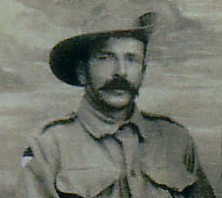 |
| William Marshall Gerard, 1895-1952 |
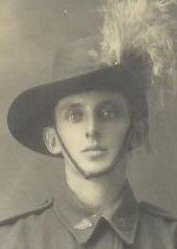 |
| Arthur Thomas Gibson, 1895-1962 |
 |
| 2nd Lieut. Percy Ussher Gooch, 1887-1962 |
 |
| Lieut. Hereward Roderick Gower, 1893-1954 |
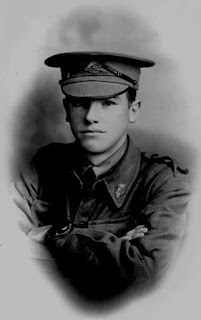 |
| Driver Jack Graham, 1895-1971 |
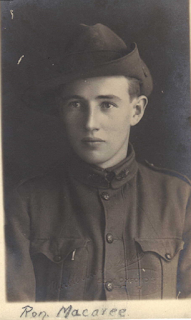 |
| 2nd Air Mechanic Ronald Edwin Macaree, 1897-1973 |
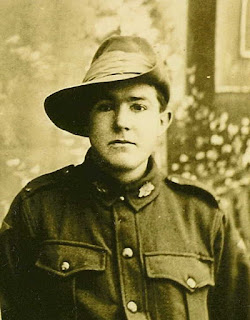 |
| Pte Gilbert Roland Shaw, 1895-1975 |
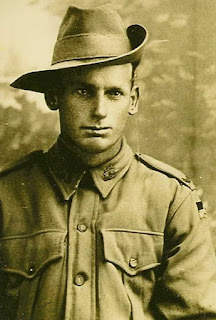 |
| PteWilliam Ernest Shaw, 1889-1917
|
and Gilbert’s young brother William, enlisted 1914, fought at Gallipoli, wounded in France 1915, killed in Belgium 4 October 1917 –
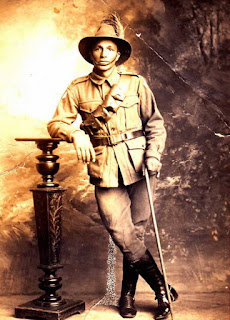 |
| Pte Alfred James Sidey, 1888-1979 |
 |
| Pte Archer William Skewes, 1886-1964 |
Here is Edmund Atherton, whose story is told in Jane Bardsley’s Outback Letterbook Across the Years 1896-1936 (Sydney: Angus & Robertson, 1987, reprinted in Australian Voices: Glimpses of our pioneering past through diaries, letters and recollections from the First Fleet to the Great War,Pier 9, Murdoch Books Pty Ltd, 2010).
 |
| Pte Edmund Atherton, 1898-1977 |
Jane’s letter, entitled “On no account let Edmund see me sad” recalls travelling to Brisbane to see her son Edmund off to war. Jane had another son in the A.I.F. whose whereabouts at the time were unknown, hence she was concerned not to let Edmund see her sorrow. Edmund, so young when he enlisted that he had to obtain his parents’ consent, was granted permission to travel north to visit his family before leaving Australia for further training in the Middle East. Not yet ready to take leave of her son, Jane took the reverse journey to see Edmund’s ship leave the dock in Brisbane
Here is an unknown soldier, his image on file at the National Library of Victoria. He may be a Queenslander. Someone reading this blog might know who he is. Please forward the link to anyone you know whose Australian ancestor served in World War I. His story has yet to be told.
Geraldine Lee


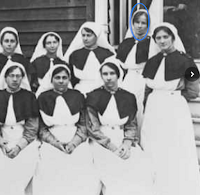
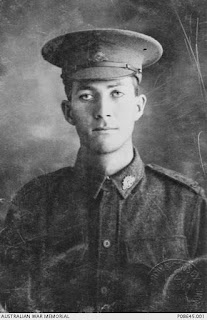
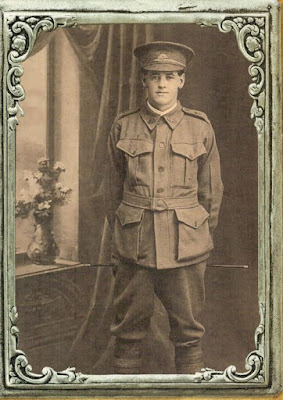
Comments
Wheeler Redux – Australia, Forever Changed — No Comments
HTML tags allowed in your comment: <a href="" title=""> <abbr title=""> <acronym title=""> <b> <blockquote cite=""> <cite> <code> <del datetime=""> <em> <i> <q cite=""> <s> <strike> <strong>